
Winter 2020
The science of preserving nature since 1964
Right Tree Right Place
If you are considering planting a new tree, whether it is in your backyard, a community garden, a public space, or on a commercial property, it is essential that you are planting the right tree for that particular spot. The goal, when you add trees and plants to your landscape, is to achieve natural balance and variety — so it is important to match plants to local conditions. If the planting is well thought out and the site, conditions, spacing, species and aesthetics are taken into account, you can have a low-maintenance and beautiful landscape.
When you want to choose a type of tree, the first thing to consider is the function you want it to serve. We can use trees, shrubs and plants to achieve results that are substitutes for physical solutions, such as getting larger condenser units, fences, drainage projects and alterations in design. Large, deciduous trees can add shade to a location, evergreens work well as a privacy fence or a windbreak, and flowering or ornamental trees can add seasonal color and beauty to a landscape.
You should also determine the hardiness zone you are going to plant in if you want the tree to survive and thrive. The hardiness zone is an indicator of the average annual minimum temperature. Using it as a reference will help you narrow down the list of trees that will do well in your climate.
Species selection is another important consideration. The best choice is to plant a species that is native to your area. These are trees that have survived and thrived for thousands of years in your region.
The next step is to look for the best place to plant in your location. Consider nearby structures as well as underground and above ground utility pipes, poles and cables (see the image below from Arbor Day Foundation). Are there other houses nearby? Think about how tall the tree will be when it reaches maturity. Don’t plant large trees under utility lines or trees which will have large roots next to a sidewalk or hardscapes including driveways that will have negative future impacts.
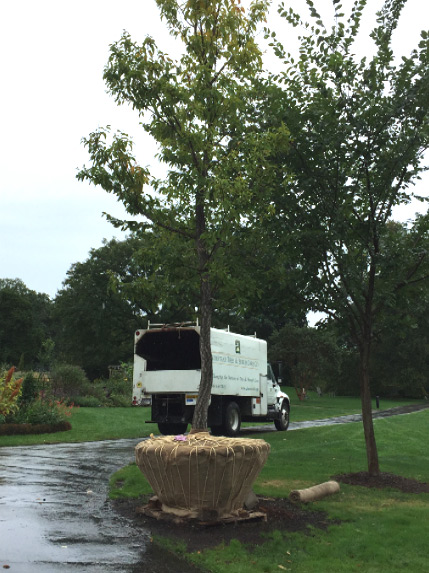
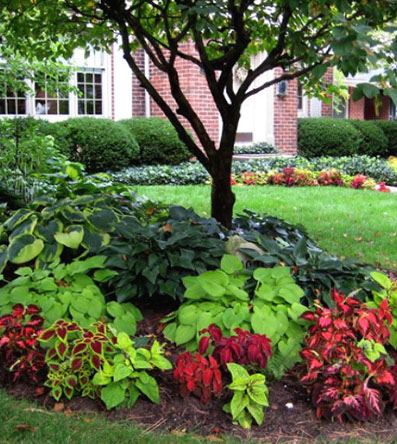

Trees require adequate soil volume to reach their maturity so the site species connection is crucial — which is best for your arborist to review on location. Other soil factors at the location can also determine which tree to plant. A simple soil test can determine the make-up of the soil including the pH balance, nutrient availability, texture, compaction levels and drainage characteristics. For example, a London Plane tree will do better in Alkaline soils whereas Red Oaks desire neutral soils and River Birch like slightly acidic soils.
There are several other considerations when you are planting trees, especially in urban settings. Large trees provide the most shade and have the most benefits — but they are also the most likely to be damaged or cause damage. Small or medium trees on the other hand may suffer less damage in storms and can be planted in more places — but their benefits are also limited. The form of the tree is also important in terms of pruning and falling branches. Pyramidal shaped trees usually require less pruning and are more wind-resistant than trees with other shapes. However, other shapes may be better suited for shade and aesthetics. Trees which bear fruit can create a mess or even a hazard on the pavement beneath the canopy. Passers-by can slip and fall on the fruit and it can be unsightly.
When selecting a tree to plant, sourcing it is also very important. Almstead arborists assess your site and then inspect, hand-tag and secure only the highest quality trees from the most reputable wholesale nurseries and growers.
Next, the tree needs to be planted correctly so it has longevity. The planting hole should be larger than 2-3 times the diameter of the rootball and no deeper than the depth of the rootball, depending on soil/site conditions (see image on right).
Now that you have information on the factors you need to take into account when you are considering adding a new tree or plant to your property, don't hesitate to contact your Almstead arborist to help you choose the species of tree or shrub and plant it for you. Many people prefer to plant grown trees because they don’t want to wait 15-20 years to attain the desired visual impact on their landscape. However, there are significant costs associated with selecting, purchasing, and planting large trees. So, selecting the right tree for the location becomes even more important.
If the tree is not appropriate for the amount of available space or location, it may not survive. Even if the tree survives, but was poorly selected, there will be considerable expenses for its care over the lifetime of the tree. Planting the right tree in the right place will provide benefits for many years with the least possible costs for maintenance.

When it comes to soil types, sandy soils have more pore space and don’t hold onto nutrients but they drain well and have low organic content and lower biology. Clay soils, hold onto nutrients and moisture which is good for initial growing (southern nurseries and plant material) but it compacts and drains poorly. Loam is typically ideal and has the right balance in our area.
Planting a young grown tree is a good option if you don't want to wait years to achieve the visual impact you desire for your landscape. Planting the right tree becomes more important because of the cost associated with purchasing and planting.
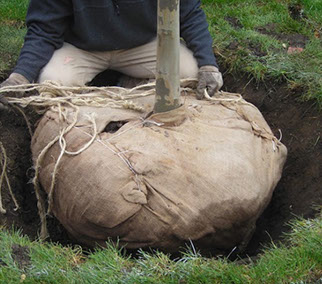
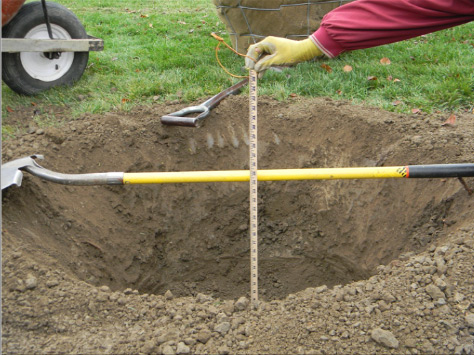
Typically we remove several inches of soil of the ball and surrounding stem to identify the tree trunk, flare and correct depth. We avoid planting when the soil is very moist because wet soil has a tendency to become compacted. When planting on slopes the tree is placed such that the top-most root in the ball on the uphill side is about even with the soil.
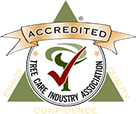
LOCATIONS:
Lower Westchester County, NY and New York City
58 Beechwood Ave, New Rochelle, NY 10801
914-576-0193
Upper Westchester (North of I-287)
15 Broadway, Hawthorne, NY 10532
914-741-1510
Fairfield County, Connecticut
547 Hope Street, Stamford CT 06907
203-348-4111
Bergen & Passaic Counties, NJ
504 High Mountain Road, North Haledon, NJ 07508
973-636-6711
Contact us for a Free Consultation